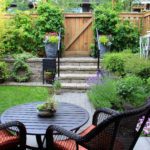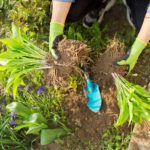Which Plants You Should Grow To Help Bees and Other Pollinators
There are over 4,000 different bee species in America. Each is active at various times of the year and needs access to a range of plants for pollinators. If you are interested in supporting bee colonies, your garden landscaping choices can ensure their survival.
Follow our annual calendar below to see which plants you could plant throughout the year. We’ve picked the top two plants for pollinators that bees adore for each season.
Winter
Many bees will be hunkering down for the winter, but worker bees may forage for food on warmer days. If the temperature rises above 50°F, you will see bees in your garden. So, consider landscaping to help bees with these two popular plants for pollinators.
Mahonia
Mahonia is a sturdy shrub, it is evergreen, and the vivid yellow flowers will entice honeybees and bumble bees. Mahonia is native to North-west America.
Ivy
You may be tempted to cut back old ivy growth, but leave it for the season. You’ll be rewarded with green-yellow flowers that are a critical nectar source late in the year for honeybees.
Spring
Spring is the natural wake-up call for bees. They are busy restocking food supplies. Garden landscaping to help pollinators could include a variety of flowers. The spring selection will be a vital resource for different bee species.
American Pussy Willow
In early spring, queen bumblebees and their colonies are expanding. The pussy willow is a small tree that can help feed the queens. You might also see mining bees gathering nectar.
Crab Apple
The red mason bee is a major pollinator for crab apples. In addition, you’ll see honey bees and bumblebees buzzing around the white blossom. There are many varieties of crab apples, so you’re sure to find one to suit your garden.
Summer
In summer, the main concern for bees is maintaining suitable temperatures in their hives. Under the hot American sun, they will try to keep their nest at 93% by fanning water. So, alongside pollinator plants and flowers, offer bees water in your garden.
Lavender
Bumble bees and lavender is synonymous with the arrival of summer. But lavender is also popular with flower bees, leaf cutter bees, and mason bees. It is easy to grow and can thrive in low-quality soil.
Hawthorn
Hawthorn plants will attract their own bee, the hawthorn mining bee. You might also spot red mason bees and ashy mining bees. Hawthorn will start blooming to signal the start of summer.
Fall
As temperatures drop during fall, worker bees are busy collecting winter resources from plants to help bees. They will stay in their homes during the cold months. Therefore, consider growing late-blooming pollinator plants to support their winter health.
Abelia Bee Bush
Abelia bee bush is a delight for bumble bees and honeybees. They are drawn to the nectar-rich flowers from June to October. With a long flowering period, your bees will have plenty of time to enjoy it.
Honeysuckle
The tubular pink and beige flowers will attract bumblebees and long-tongued bees. Honeysuckle needs little maintenance to grow, and the flowers will last until early fall.
Yearly Plants for Pollinators
You’ll see your garden become a haven for bees with the addition of a few plants for pollinators. As a family-owned landscaping business, we’re passionate about creating spaces that enhance your property and provide for nature.
So, contact us today for a garden that you (and the bees) can enjoy.



